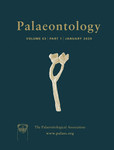Reg. Charity No. 1168330

Definitions of macroevolution fall into three categories: (1) evolution of taxa of supraspecific rank; (2) evolution on the grand time‐scale; and (3) evolution that is guided by sorting of interspecific variation (as opposed to sorting of intraspecific variation in microevolution). Here, it is argued that only definition 3 allows for a consistent separation of macroevolution and microevolution. Using this definition, speciation has both microevolutionary and macroevolutionary aspects: the process of morphological transformation is microevolutionary, but the variation among species that it produces is macroevolutionary, as is the rate at which speciation occurs. Selective agents may have differential effects on intraspecific and interspecific variation, with three possible situations: effect at one level only, effect at both levels with the same polarity but potentially different intensity, and effects that oppose between levels. Whereas the impact of all selective agents is direct in macroevolution, microevolution requires intraspecific competition as a mediator between selective agents and evolutionary responses. This mediating role of intraspecific competition occurs in the presence of sexual reproduction and has therefore no analogue at the macroevolutionary level where species are the evolutionary units. Competition between species manifests both on the microevolutionary and macroevolutionary level, but with different effects. In microevolution, interspecific competition spurs evolutionary divergence, whereas it is a potential driver of extinction at the macroevolutionary level. Recasting the Red Queen hypothesis in a macroevolutionary framework suggests that the effects of interspecific competition result in a positive correlation between origination and extinction rates, confirming empirical observations herein referred to as Stanley's rule.